Native Americans are renowned for their medicinal plant knowledge. It is rumored they first started using plants and herbs for healing after watching animals eat certain plants when they were sick. In order to protect these plants from over harvesting, the medicine men used to pick every third plant they found.
The Native Americans had a spiritual view of life, and to be healthy, a person had to have a sense of purpose and follow a righteous, harmonious, and balanced path in life. They believed some illnesses were life lessons the person needed to learn and that they shouldn’t interfere. Many modern remedies and medicines are based on the Native American knowledge of the different plants and herbs they used for thousands of years.
Here are the most versatile plants the Native Americans used in their everyday lives:
#1. Yarrow (Achillea millefolium)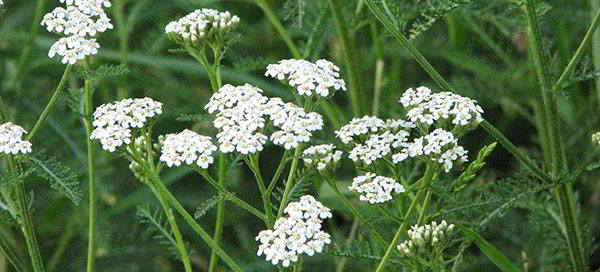
This fragrant, flowering plant has been used since Ancient Greece began using to stop excess bleeding. It is said the Greek hero Achilles used it on his wounds, hence the name. Pioneers and aboriginal people applied this on open wounds and cuts as a poultice made from the leaves to help clot the blood. They also combined fresh yarrow juice with water to help an upset stomach and for intestinal disorders. A tea made from the leaves and stems will act as an astringent.
#2. Sumac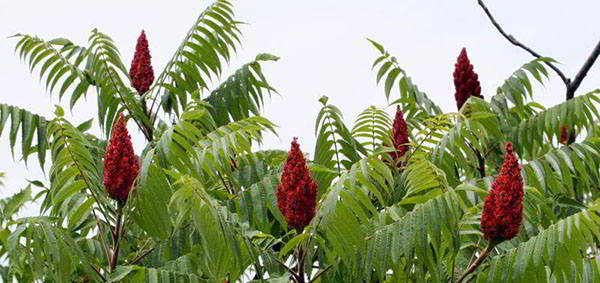
This plant can be used for multiple medicinal remedies, but it is one of the only plants that the healers used in treating eye problems. A decoction from sumac was used as a gargle to relieve sore throats or taken as a remedy for diarrhea. The leaves and berries were combined in tea to reduce fever or made into a poultice to soothe poison ivy.
#3. Blackberry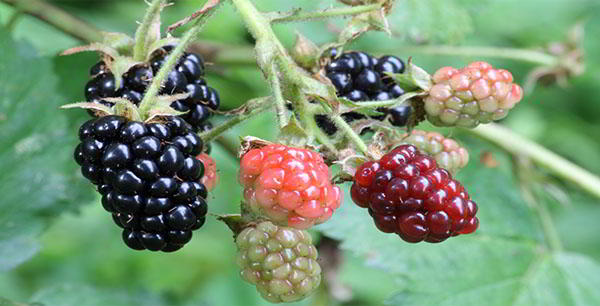
The Cherokee used this plant for treating an upset stomach. They used blackberry tea for curing diarrhea and soothing swollen tissues and joints. An all-natural cough syrup to heal sore throats can be made from blackberry root mixed with honey or maple syrup. To soothe bleeding gums, they used to chew the leaves. This plant is also good for strengthening the whole immune system.
Related: How I Make My Own Cough Mixture
#4. Rosemary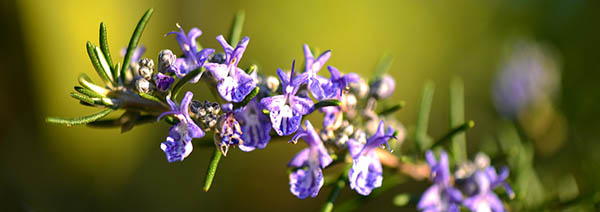
Native American tribes considered this plant sacred. They used it mostly as an analgesic for alleviating sore joints. This herb improves memory, relieves muscle pain and spasm, and helps the circulatory and the nervous systems. It also improves the immune system and treats indigestion.
#5. Mint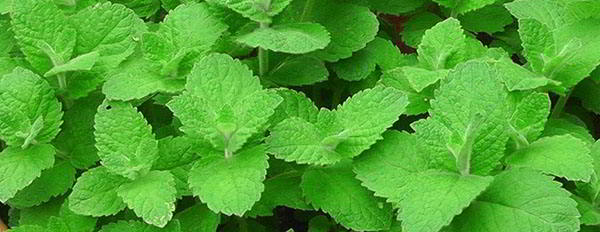
The Cherokee used to make a mint tea to soothe digestion problems and help an upset stomach. They also made a salve from the leaves to relieve itching skin and rashes.
#6. Red Clover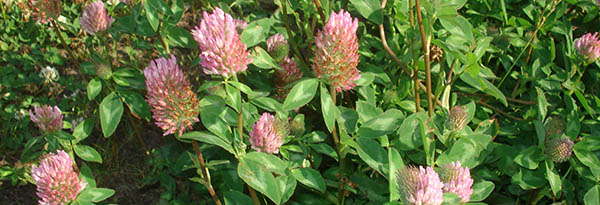
This plant has been used by healers for treating inflammation and respiratory conditions. Recent studies have shown that red clover helps to prevent heart disease by improving circulation and lowering cholesterol.
#7. Black Gum Bark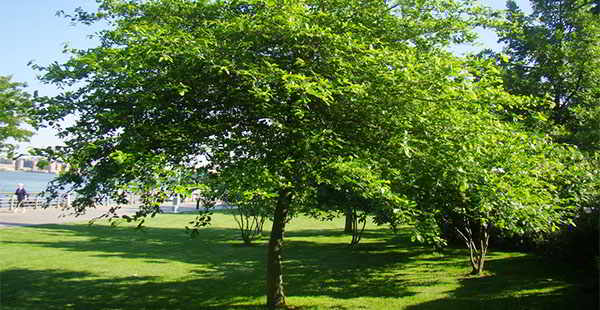
The Cherokee used to make a mild tea from the twigs and black gum bark to relieve chest pains.
Related: How Cherokees Used Trees of Southern Appalachia for Food, Medicine, and Craft
#8. Cattail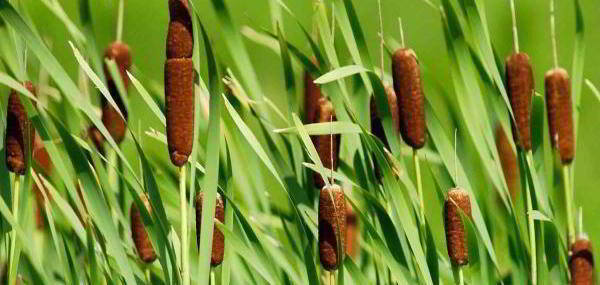
This is one of the most famous survival plants the indigenous population used for food but also as a preventative medicine. Because it’s an easily digestible food, it’s helpful for recovering from illness. It is called the supermarket of the swamp as it can be used in multiple dishes.
Related: Delicious Recipes Using Cattails The Supermarket of the Swamp
#9. Pull Out a Sticker (Greenbriar)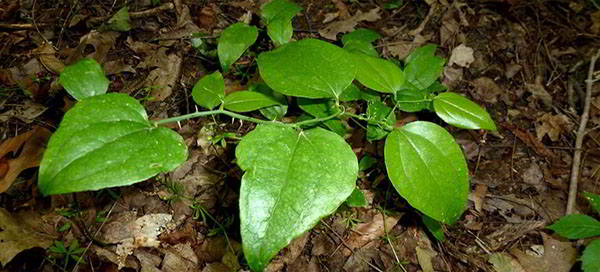
This root tea was used as a blood purifier or for relieving joint pain. Some healers made a salve from leaves and bark mixed with hog lard, which was applied to minor sores, scalds, and burns.
#10. Hummingbird Blossom (Buck Brush)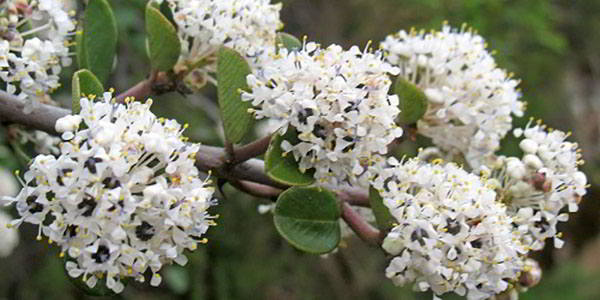
The Native Americans used this plant for treating mouth and throat conditions as well as cysts, fibroid tumors, and inflammation. It can be made into a poultice to help treat burns, sores, and wounds. A diuretic that stimulates kidney function can be made using the roots of this plant.
The early pioneers utilized this particular plant as a substitute for black tea. Recent studies have shown that hummingbird blossom is effective in treating high blood pressure and lymphatic blockages.
#11. Wild Rose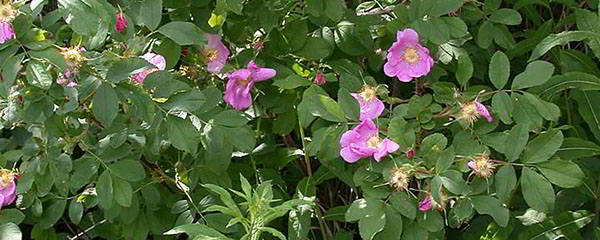
The Native Americans used this plant as a preventive and a cure for a mild common cold. The tea stimulates the bladder and kidneys and is a mild diuretic. A petal infusion was used for a sore throat.
#12. Saw Palmetto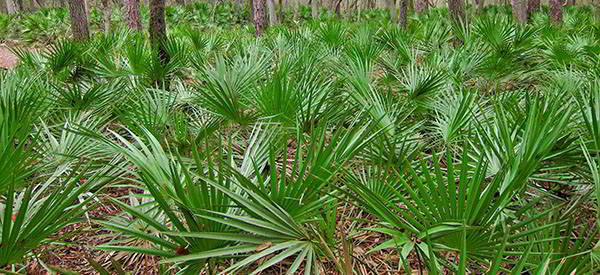
The native tribes of Florida, such as the Seminoles, used the plant for food, but medicine men used it as a natural remedy for abdominal pain. It also helps digestion, reduces inflammation, and stimulates appetite.
#13. Sage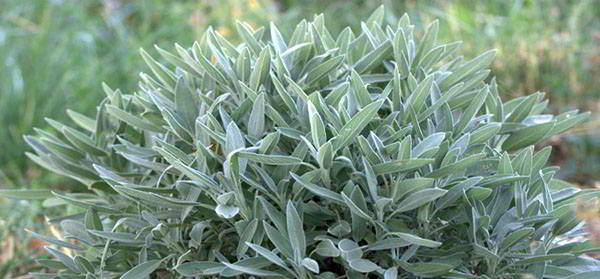
Sage is commonly used as a spice, but it was a sacred plant for many indigenous tribes as it was thought to have effective purifying energies and to cleanse the body of negative energies. As a remedy, it was used for treating medical conditions like abdominal cramps, spasms, cuts, bruises, colds, and flu.
Related: How I Grow My Herbs Indoors
#14. Wild Ginger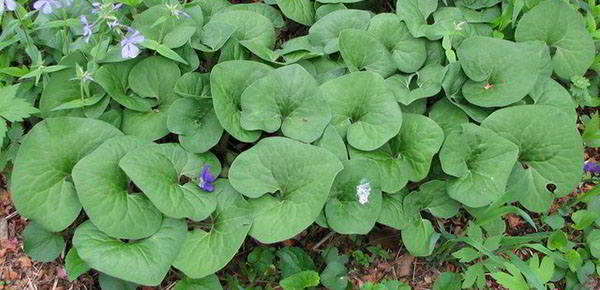
Healers used this plant for treating earache and ear infections. They also made a mild tea from the rootstock for stimulating the digestive system and relieving bloating. It also helps with bronchial infections and nausea.
Update: One of our readers sent us original pictures of wild ginger to help people identify the plant easier. (Photo credit: Erik Nielsen, Rational Design Studio)

#15. Slippery Elm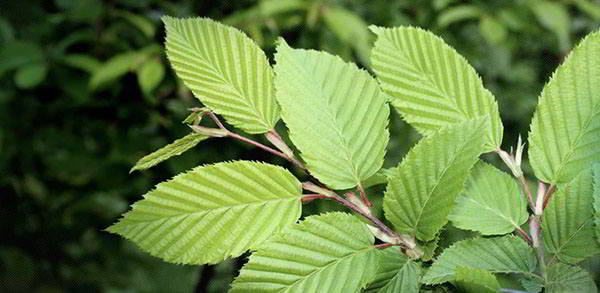
The Native Americans used the inner bark to fashion bow strings, rope, thread, and clothing. Tea was made from the bark and leaves to soothe toothaches, respiratory irritations, skin conditions, stomach ache, sore throats, and even spider bites.
#16. Lavender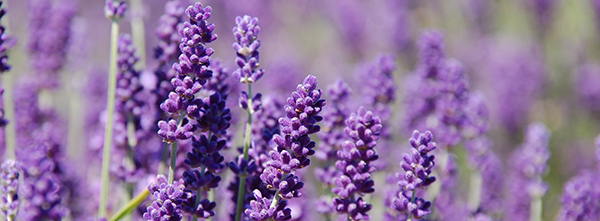
Healers used this plant as a remedy for insomnia, anxiety, depression, headache, and fatigue. The essential oil has antiseptic and anti-inflammatory properties. Infusions can be used to soothe insect bites as well as burns.
Related: 79 Edible Flowers in North America (with Pictures)
#17. Prickly Pear Cactus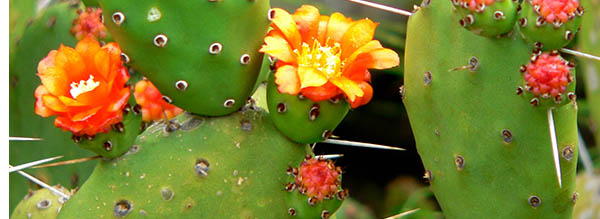
This is another plant that has been used as both a food and medicine. Native Americans made a poultice from mature pads as an antiseptic and for treating wounds, burns, and boils. Tea was made to treat urinary tract infections and to help the immune system. Now research shows that the prickly pear cactus helps to lower cholesterol and prevents diabetes and diet-related cardiovascular disease.
#18. Honeysuckle
This plant has been used as a natural remedy by the Native Americans for treating asthma, but it has multiple healing purposes, including rheumatoid arthritis, mumps, and hepatitis. It also helps with upper respiratory tract infections, such as pneumonia.
#19. Ashwagandha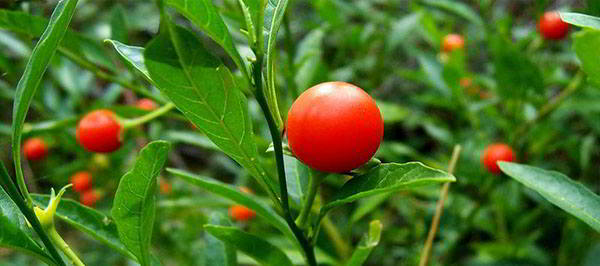
This plant was an important plant for healers because of its many unusual medicinal uses. It treats bone weakness, muscle weakness and tension, loose teeth, memory loss, and rheumatism. It can also be used as a sedative. It has an overall rejuvenating effect on the body as it improves vitality. The leaves and the root bark can also be used as an antibiotic. If made into a poultice, it helps reduce swelling and treats pain. Caution is advised in the use of this plant since it is toxic.
#20. Mullein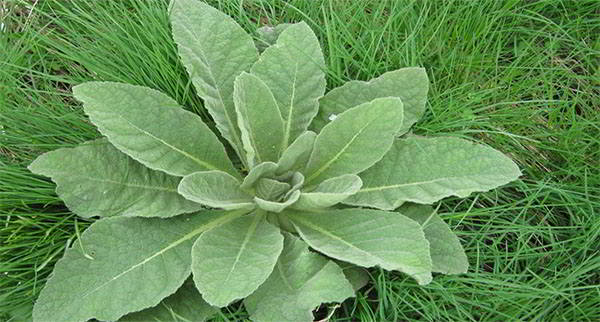
A tobacco-like plant, it was mainly used to treat respiratory disorders. The Native Americans made concoctions from the roots to reduce swelling in the joints, feet, or hands. Here you can find more medical uses for mullein.
#21. Licorice Root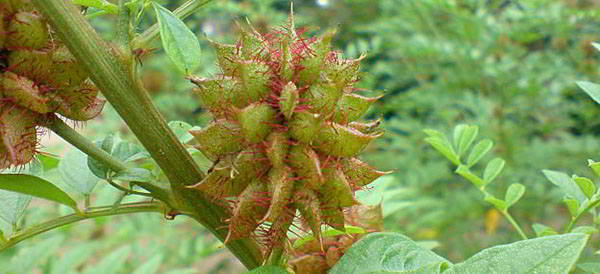
This root is famously used for flavoring candies, foods, and beverages. But it has also been used by healers to treat stomach problems, bronchitis, food poisoning, and chronic fatigue.
#22. Uva Ursi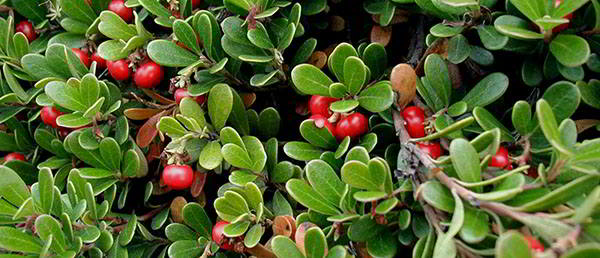
Because of the bear’s affection toward this plant’s fruits, it is also known as Bearberry and Beargrape. The Native Americans used this plant mainly for treating bladder and urinary tract infections.
#23. Devil’s Claw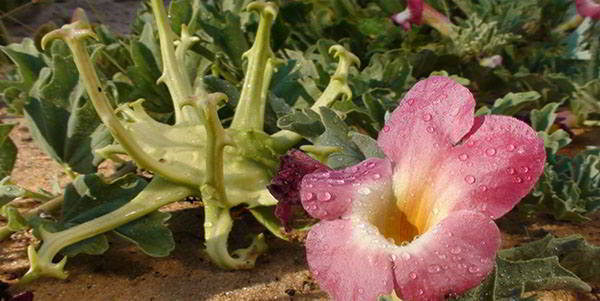
Although the name would suggest a poisonous plant, the Native Americans used it to heal various conditions, from treating fever to soothing skin conditions, improving digestion, and treating arthritis. The tea can reduce the effects of diabetes, while a concoction made from the plant’s roots reduces swelling and helps with joint disease, arthritis, gout, back pain, headache, and sores.
Remember that knowledge is the only doctor that can save you when there is no medical help around.
You may also like:
How Will You Treat Your Current Ailment When The Medical System Collapses?
The 10 Medicinal Seeds You Should Plant for a Complete Backyard Pharmacy (Video)
15 Best Herbs for Your Prepper Garden
Remove These 14 Things from Your Medicine Cabinet Immediately

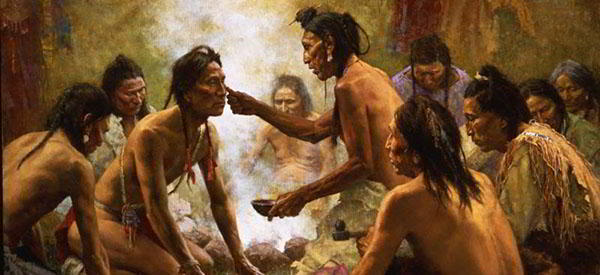
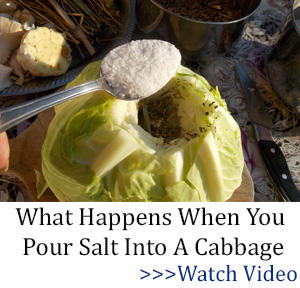




















the pic for blackberry is really a black raspberry
That is what I thought also, blackberry seed section is larger and leaves are different size and color.
Thank you much for bringing this to my attention. I just made the appropriate changes.
No. It looks like blackberry.
You can see the white pith at the bottom of the stem.
The black raspberry is smaller and hollow inside when the stem is removed.
I have been a follower, and practitioner, of herbal medicine for more than 30 years, and a practicing RN for more than 40. So I wanted to jump in here as someone with a great respect for the knowledge amassed by our Native American and world wide cultures regarding all the natural treatments that grow all around us, all over the world. It is no surprise that so many of today’s medicines and treatments are derived from plant life, nor that this amazing knowledge has passed from generation to generation in many cultures.
The medical community in this country is now recognizing the common link, and awareness is growing in the practice of what we call ‘modern medicine,’ but what we know to be ancient knowledge.
So, back to the blackberry/raspberry question. Although you are correct about the distinctive hollow formed when a black raspberry is picked, identifying the whole plant is usually your best bet. As many different parts of the plants, from roots to stems, leaves and flower/fruit are used in different manners, for its different healing properties, it helps to first see what is above ground. The stems in the picture shown are round, and bluish in color (called glaucous, in the botanical world,) indicating this photo is indeed of a black raspberry. The blackberry stem is true green, and has ridges, often brownish in mature plants, making it look and feel angular and more sturdy. Both plants often grow in close proximity to one another, especially here in the foothills of my home state of NC, and have a similar leaf stucture, but the color varies. The blackberry leaf is green on the top, and only slightly less so on the underside, with the veining prominant, whereas the black raspberry leaf is green on top, but very pale, again almost a silvery blue, on the underside, with veining more recessive. This distinction is easily noticed when they are side by side in comparison, but harder if not growing near to each other. The stems, however, are distinctively different, so start there. In addition to the variance in color, the thorns on a blackberry stem are larger, usually singular, and often curled upwards at the tip. The black raspberry thorns are smaller, sometimes clustered, and appear to curl in a downward arc. As you mentioned, the hollow in the base of the black raspberry is evident and is caused when picked – the core, or ‘pith,’ is left on the stem. This will be helpful in identifying the berry, but possibly not the plant. While both berries are delicious when ripe, the medicinal uses do vary. I enjoy them both, and prefer the wild grown to cultivated, so we get every possible benefit the earth, sun and rain provide! There are many resources out there – books hand written by practitioners, passed down through generations, word of mouth stories, published authors and notable scientists, to help guide us through the incredible amount of information needed to know about even a single plant. But the information is there, for your use and benefit, and the knowledge found in the journey of learning is truly worthy of the trip.
Really liked your comment. You as a nurse and one with knowledge of natural healing are truly a rarity. Thank You
Modern Medicine and Indian Institutes are having a very difficult time finding these old recipes. I’m searching. My life depends on it.
Over half of these are not indigenous to the americas and were not used by native americans.
i grew up on FL. The same berries grew along a canal near my house. We always called them “Black Berries”. Also, this seems like a great article.
It’s a blackberry pic. Blackberries resemble mulberries.
Black raspberries look less like a mulberry and are a rounded cap kind of looking like a tiny bowl if picked due to the inside being hollow. 😉
Anne 7 years ago
Thank you much for bringing this to my attention. I just made the appropriate changes.
SHE CHANGED THE PHOTO TO A BLACKBERRY!!!!!
I raise black raspberries and they are round, just like red raspberries.
No it is a trailing BlackBerry
Not black raspberry
Looks like Himalayan blackberry to me. Good for jelly. Not real good for pies. Would be great for this described use.
Were the Alabama and Conshatta Indians of Southeast Texas aware of the Cubensus psilocybin mushrooms? Or did these develop later due to cow dung?
In Europe, Saw Palmetto is widely prescribed for prostate issues.
Would you take it as a tincture ?
good info…thanks…I wish I could grow all the plants. the cattails are useful /. I don’t like a lot of email, but this was worth it.
Very worthwhile information
Great piece! I already use an teach these in my survival classes. I’m glad other people can see how to use them as well. TFZ
I have never seen wild ginger but that picture looked like wild violet.
The picture for wild ginger is indeed accurate. There are several varieties. The small violet flower that shows on one leaf is an accident. The actual wild ginger flower appears early in spring when the leaves appear. I have many pictures of this plant as it grows prolifically where I lived for 40 years. This particular variety is the Canadian variety. The Huntsville (AL) Botanical Society sold 3 varieties at their plant sale this spring. The other 2 are common in the south. The wild ginger has distinctive leaves in sets of 2 unlike the violet. The leaves of the Canadian one are not glossy like the other varieties. It is an endangered species as deer love to feed on it. It is also called Canada snakeroot and favored in the perfume industry. The aroma is awesome.
can you send me a way to contact the huntsville botanical society to see if i can get those plants this spring? thanks!
As far as I know the wild ginger doesn’t flower but the flowers you see are indeed wild violet growing in and around it.
jhbd, yes, the wild ginger does flower but it’s very easy to miss seeing it. The flower is very low to the ground and looks like a tiny cup with 3 points coming off the lip that are pink to rusty brown in color. It is short lived and once the leaves have grown a few inches it will disappear. The southern varieties have a more sack like blossom and are called “jugs”. When you see leaves the size of those in the picture, there likely won’t be much left of any blossoms and those would be way down at the base of the stems. The leaves grow in sets of 2. Yes, wild violets, dandelions and wood land plants grow among them. Ours were in the wood lands along Lake Michigan in Manitowoc WI area.
I live in NW Alabama and have wild gingerr in much of my yard.
Wild ginger does flower
One of those pictures is wild violet (the one with a plethora of purple flowers), the rest are wild ginger
Love this article as I do all. Very informative with great pictures making the plants identifiable. Please put them in downloadable format so they can be saved and not just printed!
download a free program called CutePDF Writer and when you go to print the file select your CutePDF “printer” and it will print the article as a pdf file, saved wherever you choose.
COPY/PASTE TO DOCUMENT. I DO IT WORKS.
Anne,
The lovely picture you have for blackberries is a picture of black raspberries.
Thank you much for bringing this to my attention
I have spent many days picking both blackberries and black raspberries over the past 60+ years….. this pic is blackberries no doubt… check a seed catalog for pics and compare
I agree
I raise black raspberries and they are round, just like red raspberries.I agree!
Anne 7 years ago
Thank you much for bringing this to my attention. I just made the appropriate changes.
SHE MADE CHANGES TO THE CORRECT PHOTO!!!!
I wish that you would have explained to to use each plant. I don’t know what to do or how to use them.
There are a number of reputable schools of herbal knowledge. The one I am most familiar with is Dr. Christophers’ School of Natural Healing. His text book is sometimes found on Amazon as a used book. It is very precise in how the herbs work, what they are used for, precautions and historical use.
This is an excellent piece of work!
What good is a list of medicinal plants that many of which do not grow in your country?
Do your research folks. Find the plants that grow near you and make your OWN list.
Good article. However:
PLEASE STOP WRITING ABOUT NATIVE CULTURES IN THE PAST TENSE !!!!!!
These cuties are NOT monolithic and more importantly, although under duress, Native Culture an People’s are in no way dead and gone!!! Most aren’t even “conquored” as the prevailing mythology goes. They just relied on treaties and conversations that the more powerful and more numerous decided we’re no longer (if ever) to be followed.
DO NOT WRITE US OFF. We know things we will ALL need to know in the not to distant future.
Good article. However:
PLEASE STOP WRITING ABOUT NATIVE CULTURES IN THE PAST TENSE !!!!!!
These cultures are NOT monolithic and more importantly, although under duress, Native Culture an People’s are in no way dead and gone!!! Most aren’t even “conquored” as the prevailing mythology goes. They just relied on treaties and conversations that the more powerful and more numerous decided we’re no longer (if ever) to be followed.
DO NOT WRITE US OFF. We know things we will ALL need to know in the not to distant future.
You are correct in your statement. Can u recommend and books etc for us to learn the Native American medicine that is a true source of correct information?
I absolutely agree with you, probably sooner than we want to think or believe.
To Dogwranger — you’re absolutely right and we have much to learn from the Native Americans. I only wish my ancestors hadn’t been so arrogant to not understand that. Thanks for the reminder.
Hmmmm. I’ve always been told black raspberries and black berries we’re the same thing…..
We, in the Southeast, also have dewberries, which I was taught are wild raspberries.
Where can I get a book that shows these plants as well as how to prepare them for use
Euel Gibbons had such a book. We used it in a college class I took called ‘S sling Wild Food’s. You might also search for the ‘Foxfiire’ series of books.
That should be ‘Stalking’. Darn corrective text……
Darcy Williamson, life-long herbalist, has published several books. The one I use as my field guide is “Medicinal Plants of the Northwest 130 monographs”. It is a simple back yard herbalist’s guide to identifying, harvesting, uses, and includes hundreds of recipes and concoctions. It is the best. None other like it. For a more scientific, botanical source use Michael Moore’s “Medicinal Plants of the Pacific West”.
I have had bouts of bronchitis for about 10 months out of the year for the last 2 years. I’ve been given z pack antibiotics, steroids which are ineffective and occasionally the prescription cough syrup which works for a 2-3 hours at a time. I am desperate for relief. I am on my third doctor in 6 months and he is treating me with the same drugs. So far no improvement. So far the bronchitis has caused scarring in my lungs, laryngitis, pulled muscles, and a fractured rib.I was desperate for help to help me feel better. i was introduced to Health herbal clinic in Johannesburg who have successful herbal treatment to bronchitis . I spoke to few people who used the treatment here in USA and they all gave a positive response, so i immediately purchased the bronchitis herbal formula and commenced usage, i used the herbal supplement for only 7 weeks, all symptoms gradually faded away, herbs are truly gift from God. contact this herbal clinic via their email healthherbalclinic @ gmail. com or visit www. healthherbalclinic. weebly. com
Some of these are accurate some are not, study before you use natural
Meds. A brief article is not the way to learn. These are meds after all. Treat them as such.
I agree. The article I found to be fairly accurate considering the plants from a native american perspective, which keeps herbalists out of trouble with the FDA. However, in today’s world extensive and outstanding research is available which provides chemical constituents, affects on the human anatomy and much more. It would be so worthwhile to learn more about basic remedies provided by plants that grow near you. I’ll give you 30 seconds to figure out why we don’t hear much about that research!
agree
You go girl! lol ain’t it funny how unknowing becomes the knowledge. Sending you peace and a slice for me. Indian Hill Billy Tehachapi
I am a male of 55 years now and I have been confirmed diabetic. I am having lots of symptom like weak erection, weakness of the body, dry lips and palms, and even restlessness in the legs and shrinking of my general body build ups. My head is itching very much. I’m a male and at the time of diagnosis, I weighed about 215. (I’m 6’2″)Within 6 months, I had gained 30 to 35 pounds, and apparently the diabetes medicines (Actos and Glimiperide) are known to cause weight gain. I wish my doctor had mentioned that, so I could have monitored my weight more closely. It’s been very hard to lose this weight.nothing was really working to help my condition. Finally i started on Diabetes herbal formula i purchased from Health Herbal Clinic, i read alot of positive reviews from other patients who used the Diabetes herbal treatment. I used the herbal remedy for 7 weeks, its effects on diabetes is amazing, all my symptoms gradually faded away, i walk very more freely by myself now! Visit www. healthherbalclinic. weebly. com or email at healthherbalclinic@ gmail. com I recommend this diabetes herbal formula for all diabetic Patients.
thank to doctor Monday,I am from USA, I was diagnosed of Emphysema
(COPD) in 2014 and I have tried all possible means to get cured, i even
visited phonologist but all to no avail, until i saw a post in a health
forum about a herbal doctor from Africa who prepare herbal medicine to cure
all kind of diseases including Emphysema, at first i doubted if it was real
but decided to give it a try, when i contacted this herbal doctor via his
email he sent me the Emphysema herbal medicine through courier service,
when i received this herbal medicine, he gave me step by instructions on
how to apply it, when i applied it as instructed i was totally cured of
this deadly disease within 12-14 days of usage, if you are suffering of
this diseases you can as well Contact this great herbal doctor via his
email nativeherbalclinic@gmail.com or http://Www.nativeherbalclinic.webs.com
I to have copd like to get hold of this herbal doctor if price is not to high I am retired to see if it works I just turned 63
I really think you should also use scientific names when listing edible plants, because common names are used for many different plants or plants in the same group, but not all are safe.
I agree. I’m also confused on the Ashwagandha… I thought it was grown in India based on all my sources. Is there a true American Alternative? Otherwise I doubt it was used by native American. The scientific names are vital. One example is St Johns Wart, there’s tons of varieties, but only one works.
Since rosemary, sage, and lavender are plants of the Old World they would not have been used by Native Americans at least until the plants had been brought to the New World. They did use sage prior to this time but they were sagebrush and its relatives – no relationship to culinary sage.
Ashwagandha is also an old world plant that wouldn’t have been used traditionally by native Americans.
Rosemary, sage, and lavender were not in the New World until they were brought here from the Old World. Sagebrush was and is used by Native Americans and is a New World plant.
No there are different varieties
You go girl! lol ain’t it funny how unknowing becomes the knowledge. Sending you peace and a slice for me. Indian Hill Billy Tehachapi
I have tremors and have tried everything and thought you might have a remedy? I have my husband write everything for me and I use a spoon to eat. Can you help?
I love your articles laurie
Hi Laurie,
It is best to address this question to a GP since they are the only ones in the position to recommend you treatment for your condition.
Your situation is quite difficult and I do have some acquaintances who suffer from this as well. Some of them have tried medical marijuana and that really helps.
From what I know, there are more remedies for your condition, most of them are from the natural world and include plants. One of them is wild lettuce which is widely known for its painkilling properties, but many people consume it for its relaxing properties, you can read more here: http://www.askaprepper.com/similar-morphine-best-natural-painkiller-grows-backyard/
You can also check the other articles on natural remedies.
Wish you good health,
Sarah
Laurie, first thing to do is detox your brain tissue of heavy metals. Fresh green juice 1cup 2-3x per day. While you’re doing that, research and choose: Bentonite Clay, Epsom Salt, Kaolin Clay, Diatomaceous Earth, etc. All detox heavy metals.
Do a Coconut Oil pull for 20mins EVERY DAY. Add 1 drop of Frankincense OIl. The mouth is a huge source of toxins entering the body, and the closest tissue to store them in is the brain. Everyone should kill off the bacteria in the mouth every day, and your body will thank you!
My grandmother was part Cherokee. She spent most of her life in the Arkansas/Oklahoma area and lived with and near Cherokee people. She used an herb she called “Jusimoke” for healing wounds and drawing out infections. It is a very pungent medicinal smell on a stalk with sawtooth edged leaves. Can anyone identify the real name of this plant? You can email me @GrannieOh@gmail.com
I Cassandra Mary Wimbs is very glad for
This site. I think they should be listed
By function. For example contraceptives
Like cotton root.
Just a quick word about both licorice root and uva ursi.
Licorice root contains a substance called glycyrrhizin that can raise blood pressure in patients. When you buy supplements, most are labeled DGL, to indicate they’ve been deglycyrrhizinated. There might be a way to do that yourself at home, but I’m not sure how one does it. With that in mind, if using the plant and preparing it yourself, it’s definitely one to be cautious with for anyone with hypertension. (OTOH, it can be useful for someone with plummeting blood pressure, such as going into shock.)
(Nothing written above should be construed as medical advice. I’m not certified or allowed to provide that.)
And uva ursi is great for the bladder, but it shouldn’t be used more than two weeks straight. At minimum, you should take a six-week break between using it. Unless you have chronic bladder infections, you’ll probably not be using it very often for that purpose.
I smoked for approximately four years, from age 18 to age 22. I am now age 66 plus and was very recently diagnosed with emphysema. I had for some time now noticed having difficulty catching a deep breath. Never in my wildest dreams did it cross my mind that I may develop a serious lung disease. Last year december i purchased emphysema herbal remedy from Best Health Herbal Centre, my emphysema was totally reversed within five weeks of usage. Am so happy, now living a normal life. Please all smokers must note, I am only writing this to inform others that if you think you will escape the dangers of a serious lung disease please think about it again because it is not avoidable under any circumstances.
I found out that I have chronic obstructive pulmonary disease three years ago. I quit smoking for a few days and started back up because it seems everyone around me smokes, my boyfriend, daughters, son-in-law and it makes it so hard to truly quit and yes I know I’m slowly killing myself. I’ve been a smoker for 38 years was down to three or four cigarettes a day then started smoking like crazy again. I really do want to quit just don’t have the willpower! So if you don’t smoke now don’t ever start,because if not for this herbal remedies i bought from total cure herbal foundation i believed i should av been with my tank now, it’s no fun getting this sick and trying to fight the urge not to smoke. I hurt so bad everyday, my back and my lungs. I wake myself up at night with my wheezing. I cough all the time I cant breath when I’m laying down. I use 2 different inhalers three to four times a day and also do breathing treatments at home.But i was able to get rid of this disease totally through the means of totalcureherbalfoundation@ gmail .com which i purchase from them,this herbal foundation are the only place where you can find the right herbal medicine to any diseases including COPD emphysema.
I smoked for 35 years,. I have COPD also. I made a pact with my best friend that we would stop smoking on the same day. With that baxckup, I found I was able to quit cold turkey. It lasted for me bnut not for her. Try to get one of your friends or family to joi8n you. Support really helps. I am now severely lung compromised with the addition of congestive heart failure and A-fib. Let your family knwo what this is doing to you.
Some of this info is good, some kinda sketchy, some is dangerous, like the sage used by Southwestern tribal healers was Salvia apiana, and there are similar looking related sages that are deadly. So far as Romero and other imported herbs, they spread rapidly and were widely adopted by tribal healers.
There are lots of good books on herbal medicine, one of the most useful is a little book by Michael Moore called Los Remedios.
Never forget the willows as highly effective aspirin substitutes, prickly poppy for a relaxing tea, Ephedra antisyphillitica as a stimulating tea (ephedrin), any of the mints for stomach upset, and the glory of spring mustard greens as an aid to recovering from a poor diet after a hard winter.
The new shoots on cat’s claw (Smilax Bona-nox) are pretty tasty, too.
Good info mostly, but would have liked to be more specific on some of them. Some of these are native to the US, others aren’t. So while they may be used now, some of them wouldn’t have been used as traditional Native curatives. Lavender, for instance, is not native to the US at all, but was brought from the Old World. Also, some sub species of sage are native, like white sage, while others (like the pictured common sage) are not.
hm.. used by Native Americans today, or…. because there are a few of these NOT native to the Northern or Southern American continents arriving within post-columbian and later.
this is really cool
I like to know these thing
Many of these plants are not actually native to America and were brought over by Europeans or others, including Lavender, Nasturtium, Red Clover, Honeysuckle (there are native honeysuckle, but the one you show in the picture isn’t one), and mullein. These plants may be used by Native Americans and may be useful for health purposes, but are imported from Europe.
This was a great article, but is there a reference book that can teach or direct how to use these plants correctly without poisoning ourselves. A reference for making teas,
poultices, sauves and other medicinal products when SHTF would be invaluable. In other words please show us how to make these remedies!
My name is Reggie Manfred, I’m from United State GA. I was diagnosed of Emphysema (COPD) in 2018 and I have tried all possible means to get cured, i even visited pulmonologist but all to no avail, until i saw a post in a health forum about a herbal doctor from Africa who prepare herbal medicine to cure all kind of diseases including Emphysema, at first i doubted if it was real but decided to give it a try, when i contacted this herbal doctor via their website, he sent me the Emphysema herbal medicine through courier service, when i received this herbal medicine, he gave me step by instructions on how to apply it, when i applied it as instructed i was totally cured of this deadly disease within 5 weeks of usage, if you are suffering of this diseases you can as well Contact this great herbal doctor on their website at: http://solutionhealthherbalclinic.com
Does anyone know a herbal remedy for a cold sore to shorten the duration or keep it from replicating and becoming bigger.
Rose essential oil. Its horrifically expensive so find a good rose “blend”. Mountain Rose Herbs online has an excellent organic rose blend. Exceptional quality ingredients.
You can also use a TINY drop of Clove oil, often found in the grocery store spice aisle, in coconut oil, to kill the bacteria.
Thank you so much Sky. Im.going to try it.
Over half of these are not indigenous to the Americas and were not used by Native Americans… Lavender and Rosemary are from the mediterranean , Devils Claw is from Africa, Ashwaghanda is from India, only one variety of honeysuckle if indigenous to Virginia (and its not the type pictured, nor the type cultivated and used in medicine – which is from Japan), Red Clover is from Europe, and the type of sage you have pictured is from Europe and not the dozens of indigenous sage varieties that all have different uses unique to their own variety.
You are writing this on a computer… it is posted online… these are very easy things to fact check. You insult indigenous people everywhere when you spread misinformation like this. You insult the ancestors who actually used these things and you insult the native americans whose name you draw on to attract notoriety to this post. As a multi-racial indigenous woman, I am asking you to remove this post entirely.
Lived in the App hills my whole life, picked blackberries since I was a tadpole but never knew that there was two different ones ( black-raspberry and blackberry) I believe our preserves are usually a mixture then. I always noticed some blackberries was sweeter and shaped a little different, correct me if I’m wrong but I’m guessing that’s the blackraspberry huh. Thanks for every tip, oh and I’m part Cherokee, my great grandfather was a chef and had no idea of any of these plants. Thanks again!
This post is a joke and really misinformative. As a few folks have mentioned, many of the plants listed are NOT INDIGENOUS TO NORTH AMERICA and were not historically used by Indigenous people. Also- as someone else mentioned, stop past-tensifying Native people and our knowledge! Using words like “were” and “used to” is an old trope of colonization that needs to stop. STOP perpetuating the myth that we’re all dead and gone and not using our medicine ways! If you have the capacity to publish a website, please take it a step further and provide references and make sure you’re not making a fool of yourself. Sad. There are so many pieces published like this.
Perhaps the use of “were” and “used to” are used because many Native Americans have folded and use traditional new medicine rather than the old ways. NOT saying this is true, but I do conjecture that many have stopped using ‘the old ways’ and have now begun using the crappy Rx and OTC solutions …maybe because the ‘old ways’ have been lost in the generations or can’t be found locally where they now live…just an option for the author attempting to “past-tensify” the Native Americans.
Can you give me some more information on Ashwagandha!
After years of working in construction and smoking cigarettes,I was diagnosed with COPD and pulmonary fibrosis. As my illness progressed, I found myself relying on supplemental oxygen around the clock. Even getting out of bed became a challenge.My doctors and specialists recommended a lung transplant, but after researching the pros and cons of such a drastic procedure, I decided to try something less invasive. I contacted multivitamin herbal cure cape town for organic natural treatment you can search for them on google. Following the COPD and pulmonary fibrosis herbal treatment procedure , my lung function has improved dramatically after my first four weeks of the herbal formula .My quality of life has gotten a lot better. I was amazed that I could breathe without any dead air. I no longer need oxygen and look forward to continued improvement because a specialist told me already I have a 97% chance of getting my condition totally due to the herbal treatment effectiveness . If you or someone you love has COPD, pulmonary fibrosis or another chronic lung disease, and would like to see improvements like mine they even guarantee me totally cure once the treatment is done , their website multivitamincare , org they will put you through on the herbal process.
Hi, my name is Jules Lidguerre I am Dene . i am from northern saskatchewan, canada.
my wife has lupus for 15 years now, she needs help from medicine man from navajo, chinle, arizona. i know a person name by J R Wagner. who hlp us for refering us to medicine man. over the phone. a few years ago. my phone number is 306-686-4910. we need help.
One thing I can guarantee is in the event of a crisis there will be equal numbers of people that are in need of aid as the numbers of people standing around debating what type of plant we’re looking at before any aid is rendered!
In regard to cattails, it is my understanding that the plant will absorb chemicals and toxins from its environment. Please be sure your plants are from a fresh, clean water source. Many will say this applies to all edible plants, which is true to an extent. Some can be washed before consuming, but cleaning will not remove absorbed toxins.
When i first found out that I’m HSV_2 positive, my world came crashing down” Not only did the guy that i caught it off ditch me, but he actually told all my friends that he got it from me. I found myself lying alone on my bed, depressed and crying at the thought of never being in a relationship or having children. I knew i could never tell a guy i liked about my herpes After all, i knew that if i had been the other way around i most probably would have run a mile. A good friend of mine told me that she’d been in the same situation and she recommended me to a herbal doctor called Oshuku who helps her got rid of her own herpes so i contacted him and he prepared me his herbs and root which i used for weeks It’s really amazing how thing works. I recently got married with the love of my life. my husband and I thank you deeply Dr Oshuku. you can contact info droshuku@gmail.com
Who cares? LOL. Just eat them and enjoy!
I have a friend who had taken traditional medicine and a diet plan from Nze Njoku Herbal Home (nzenjokuherbalhome@gmail.com) on google to treat Arthritis and High Blood Pressure and for some years now he looks normal. From severe pain always a sick guy Now he looks so healthy and enjoying normal productive life? Praise God
Most of these plants were not used in North America by the indigenous people as they are not native plants